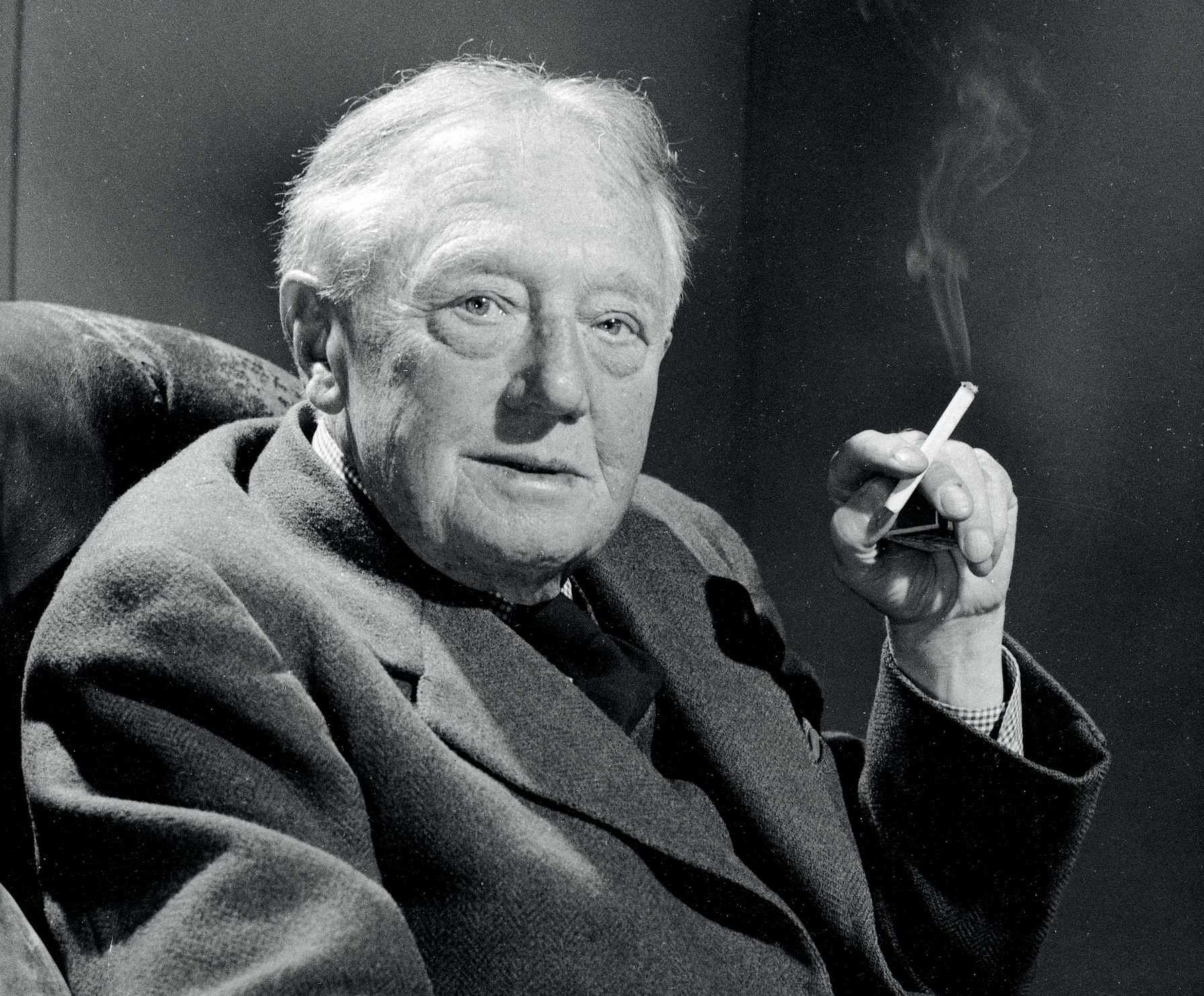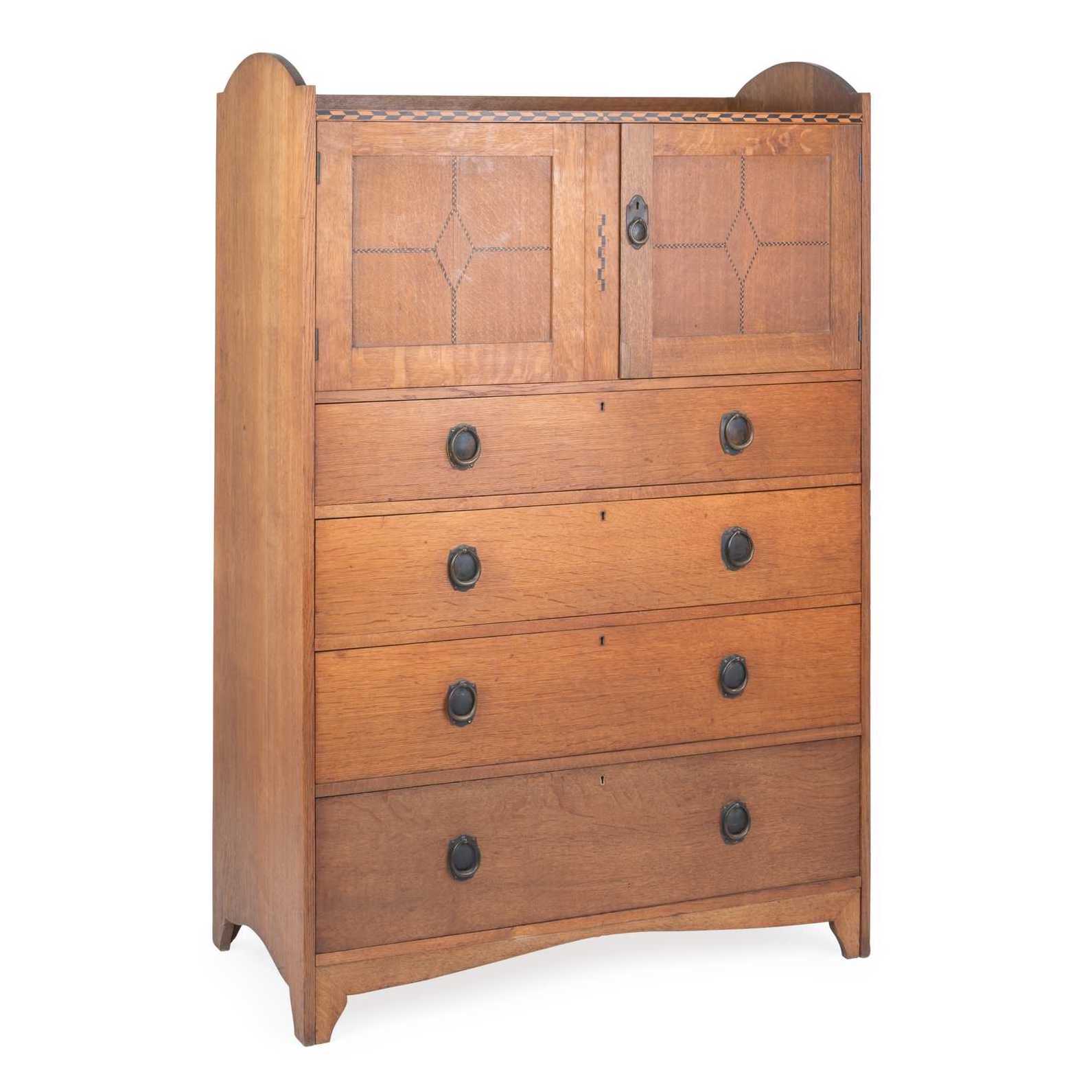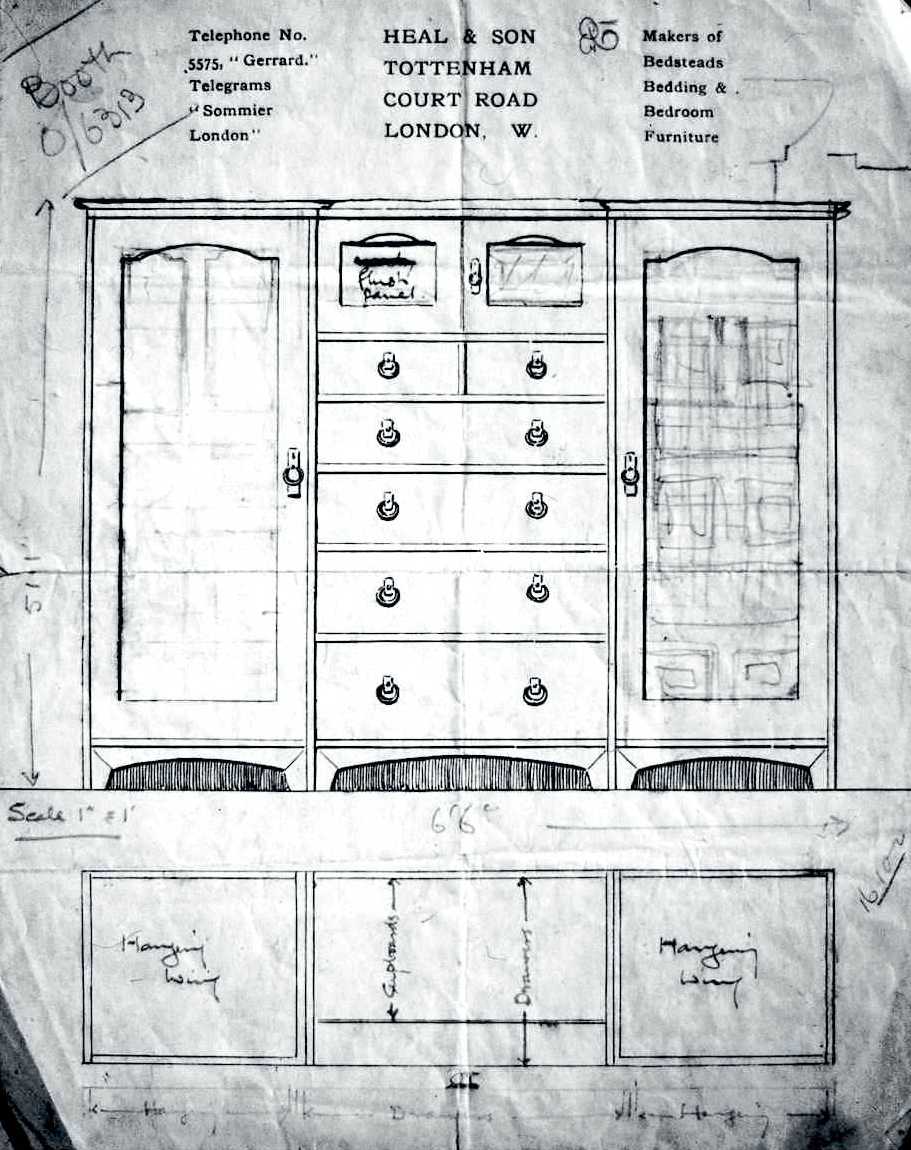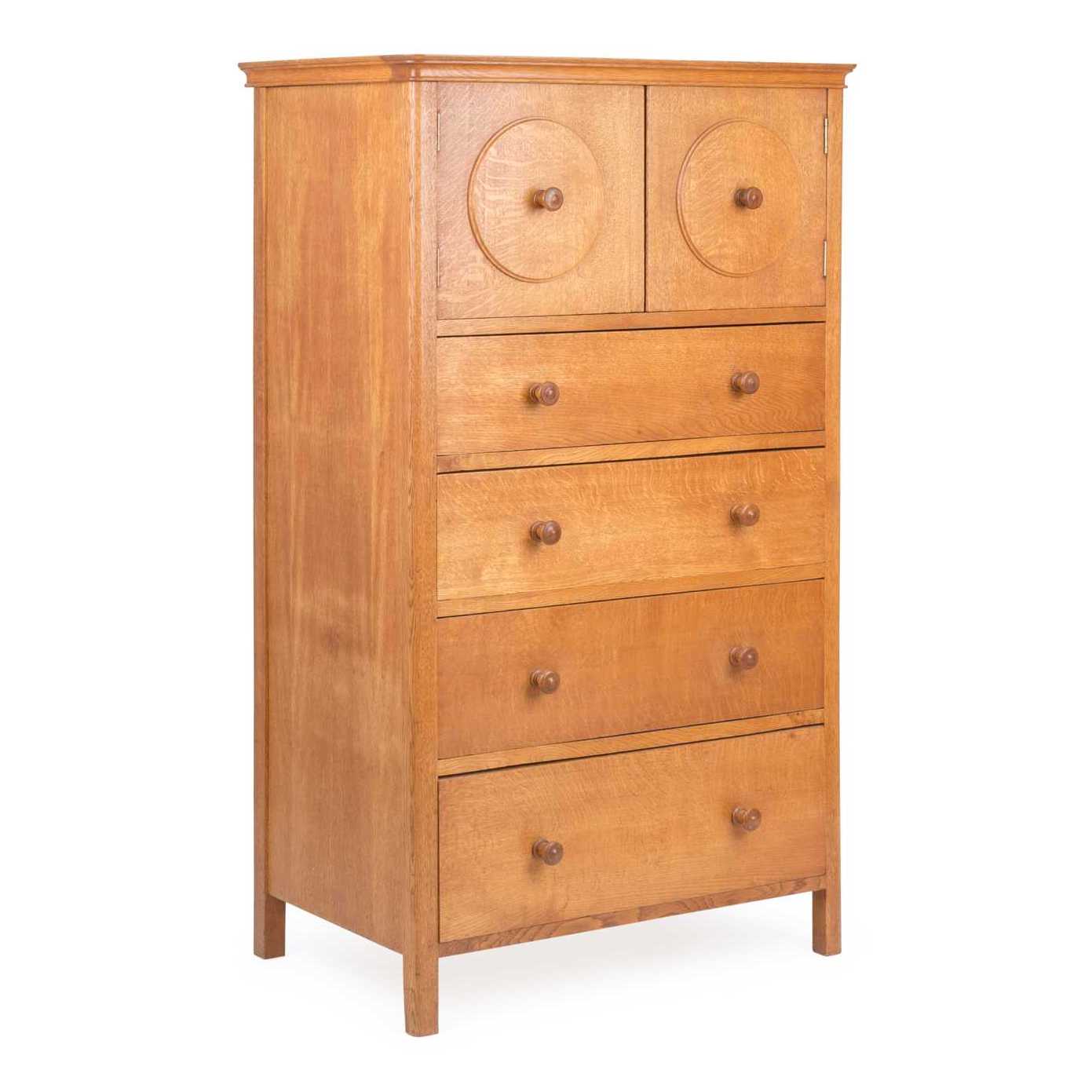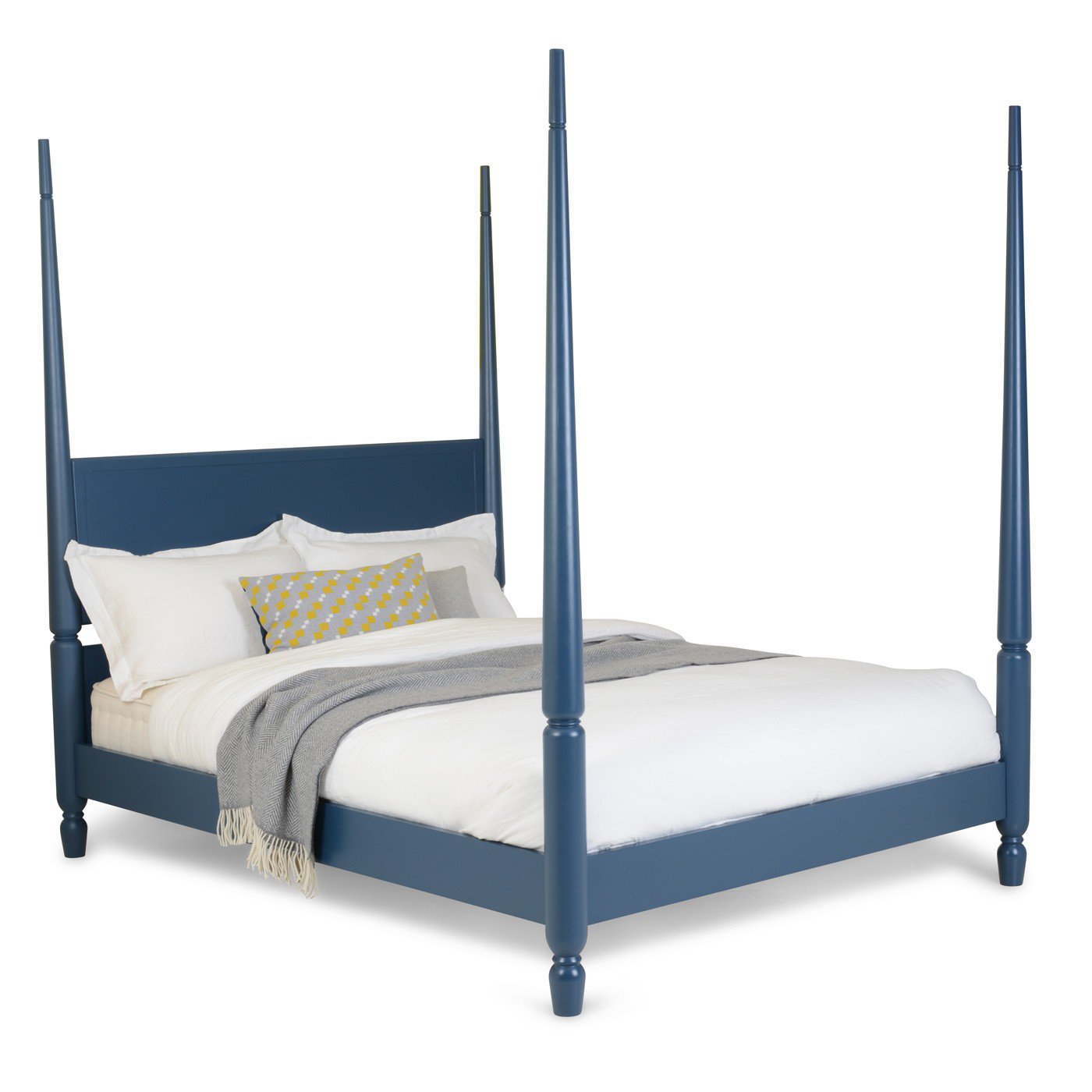Sir Ambrose Heal (1872- 1959) was a designer, retailer and influential figure whose time at the helm of Heal’s put the firm at the centre of design and retail innovation in Britain. Chairman of Heal’s from 1913-1953, a number of his Arts & Crafts designs feature as part of our Heal’s 100 exhibition alongside contemporary furniture inspired by his legacy. To better tell the story of Ambrose and his lasting impact on Heal’s, we spoke to his grandson Oliver, who describes the many sides to his multi-talented forbear.
–
“Ambrose Heal joined the family firm in 1883, after serving a two-year apprenticeship as a cabinet-maker. Strongly influenced by the Arts & Crafts movement, much of his work was based on his study of antique furniture.
“Ambrose’s approach to life and work was one of integrity and based on his firm belief that it was his mission to improve the design of the objects with which we surround ourselves. In the words of Gordon Russell: ‘His outlook was not just a fashion of the moment, It was a deeply felt way of life with him and affected everything he did.’”
Heal’s 100: 347 Suite Tall Boy by Ambrose Heal (1902)
“An early Ambrose Heal tall boy in quartersawn oak and inlaid with ebony and boxwood in chequer stringing. This is a rare example from the Heal’s bedroom suite ‘347’ from 1902, illustrated in Oliver Heal’s book, Sir Ambrose Heal and the Heal Cabinet Factory. interestingly, it is labelled inside with a name and the date 1907, which is probably that of the original owner.” Magnus Englund, Heal’s 100 Curator
“Ambrose married Rose Rippingille in his early twenties and they had a son, Cecil Ambrose, Sadly, Rosie died in 1900 and Cecil was killed on the front line in 1916. By then, Ambrose has remarried, to Edith Florence Digby Todhunter, although he never fully recovered from his grief.
“Despite his reluctance to be involved in public life, his contributions were recognised by his contemporaries, who elected him to the Art Workers Guild and the Society of Antiquaries. He was also honoured to receive the Royal Society of Arts’ gold Albert Medal, elected to the select new group of the Royal Designers for Industry and received his knighthood in 1933 for services to industrial design.”

Heal’s was to become synonymous with the symbol of the four-poster bed, thanks to Ambrose Heal’s introduction of this distinctive logo. This sign hung outside the Tottenham Court Road building for a number of decades and is now on display inside.
“The skill of the retail merchant is more ephemeral than the furniture that he sells, yet Ambrose’s talent in this area was perhaps even more crucial to the reputation of the business. With typical pedantry, he insisted that ‘a store is a place where you keep things; a shop is a place where you sell things’, so the Tottenham Court Road premises were always referred to as ‘the shop’ and he was proud to be a shopkeeper.
“To attract customers, Heal’s needed to stand out from the Ordinary, this meant that every detail was given careful consideration. First of all, the merchandise had to meet high aesthetic and quality standards, in keeping with William Morris’s golden dictum: ‘Have nothing in your home that you do not know to be useful or believe to be beautiful.’”
Heal’s 100: Owl Cabinet by Ambrose Heal (1920s)
“This limed oak Tall Boy is a much-loved design, affectionately known as the ‘Owl Cabinet’ because of the distinctive large roundels to the top cupboard, giving it an owl-like appearance. With four large drawers under the top cupboard, it remains a practical and attractive storage unit for today, amazing considering it was introduced before the First World War and continued in production until the end of the 1920s.” Magnus Englund, Heal’s 100 Curator

This wartime sales leaflet was distributed to Heal’s customers around 1917 and is an example of Ambrose’s pioneering approach to marketing.
“Merchandising deemed good enough to be on the premises was displayed imaginatively, then promoted with advertising and graphics that reflected the assiduously developed house style, using copywriting that spoke to an intelligent, cultivated customer. The adoption of a recognisable corporate identity through the four-poster logo and the chequered border around advertisements, was one of his earliest contributions – long before the concept was commonplace.
“Crucial to Ambrose Heal’s success was the team of people he assembled around him, at a time when shop staff were generally poorly treated and held in low esteem. He recognised the need for people who shared his vision, fostering a strong team spirit by showing respect for the individuals he employed. But Ambrose did not tolerate fools or slovenly work and insisted on things being how he wanted. His baleful stare reduced many to size.”
Oliver Heal
Heal’s 100: Pinner Four-Poster Bed by Kirsty Whyte (2015)
“Heal’s has a long and proud history of selling four-poster beds. The Pinner bed, named after Sir Ambrose Heal’s hometown, has a pragmatic Arts & Crafts elegance combined with undeniable modernity. It features a low mattress and raised headboard and is finished in Atlantic Blue, the colour today more widely seen as the new neutral.” Magnus Englund, Heal’s 100 Curator
Discover the history of Ambrose, Heal’s and British design by visiting Our Heritage page or the Heal’s 100 exhibition on display at our Tottenham Court Road store from 8th May – 11th June. You can also shop a selected range of pieces from the collection here.

